How to “Permiculturefy” an Urban Farm
I often do or learn a heap of things at once and think I’m going to break it down into a series of bite-sized blog posts. It almost never happens — I post the first segment and then get too distracted to finish the rest. The orphaned contents of Appalachian Feet’s “drafts” folder is bursting at the seams.
I don’t want to fail to tell the tales that have occurred recently, so I’m opting for a block of behemoth photo essays.
This post details our garden’s long-term goals and current progress. If you’re growing things (or planning to) you’ll probably find something you can use. I’m also hoping that a list of all the “pros” alongside the “cons” will make me feel better about the parts we haven’t finished yet. Like I said in my ugly garden post, it’s always a morale booster to photograph the best bits for posterity.

First of all, why permaculture? We already had an urban farm, so why change it?
The easy answer is because some harder work up front means a lot less effort, money, time, and input down the line.
The grander answer is that this sounds like the best way I can make an impact on the state of the world, from politics to climate change. Geoff Lawton says that you can fix all the world’s problems in a garden and this short BBC documentary does an excellent job explaining why conventional farming isn’t going to last.
I’ve spent the last 12 years frustrated that I didn’t buy land in the country instead of purchasing our highly-trafficked downtown location — we really want larger livestock and room for tree crops. However, people have become very interested in living sustainably while growing local food and our location gives us an advantage in spreading that knowledge.
We knew that one key area where our focus was lacking was aesthetics. In spite of having a background in art, I am prone to focusing on the practical at the expense of beauty. Few people are inspired to emulate an unkempt yard, no matter how much more beneficial it is to society and the planet.
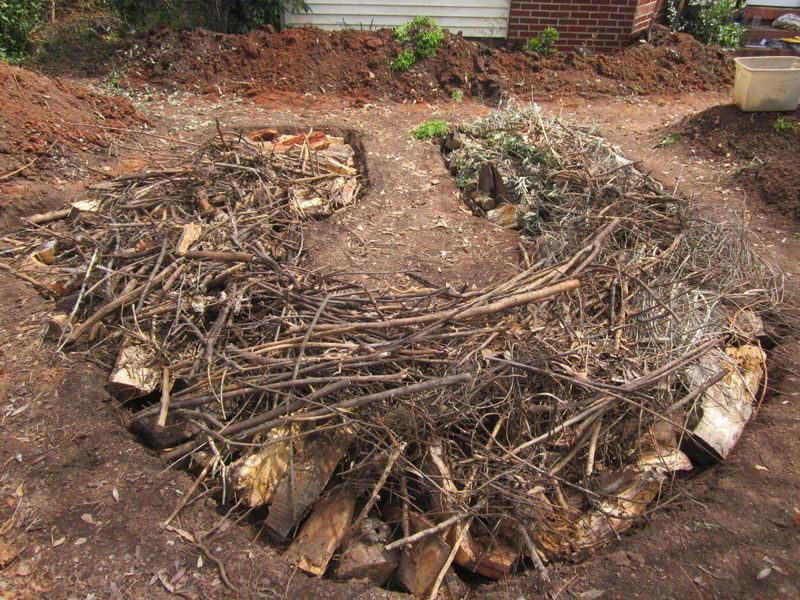
Photo Caption: Here we’re combining two permaculture techniques. Keyhole beds favor planting space over pathways and hugelkultur (an agricultural method of burying wood) retains water and improves the soil. We kept finding new supplies of wood all season so our hugelkultur grew in depth as time went on. This bed is the centerpiece in our front yard, and we have a small water feature planned for it.
Click the link to keep reading.
However, phase one involved making it even worse for a while. Here’s a quick history of our yard:
- In 2001, I bought the house and promptly tilled the front and back yards to make raised garden beds. (I have later learned permaculturalists would refer to this as a “type 1” error, since I hadn’t planned for succession first. This meant I didn’t have enough plants to fill the newly disturbed and empty spaces before the weed riot began). This photo from around 2006/2007 shows my friend Kirsten and I fixing the resulting weed problems in the front yard with additional sheet mulching. It’s hard to see in the photo, but the yard involved heavily mulched raised beds with narrow, trenched paths snaking in between. There was one wide wheelbarrow path that passed around the house to the backyard compost piles. At the time, my mom was a fan of all paths being 2′ – 4′ wide and complained about my narrow pathways… turns out it is an encouraged space-saving technique in permaculture. At this time I also planted perennial fruit that included our passalong pomegranate, figs, muscadine grapes, a peach, a pear, and an Asian pear. They are all well-established now.
- Around 2009 my daughter and I decided to live with my mom and stepdad while renting out the house. We removed the extensive gardens and replaced it with lawn.
- Those plans changed when Nathaniel and I found each other. Our newly upgraded little family of 3 moved back in and gave our neighbors whiplash by putting all the garden beds back. No really, look at these before and after photos of what we did in 2 months. It’s insane. In 2011 we still had a front lawn that we had to mow (but you can imagine how effective 3 people who care nothing about lawns are at mowing them — it had to become something we were proud of so we’d maintain it).
- In spring of 2012 we sheet mulched the front yard to eradicate the Bermuda grass and other grass species that were growing there. It was essentially blank all year long… people must think we really love the way mulch looks.
- In February of 2013 I changed my mind about not having much of a garden and instead planned a massive garden overhaul. The idea is to do a ton of up-front work that streamlines the process later on. We decided to focus on the front yard first since it is the most visible (and neglected), working to make it pretty as well as functional. Thus our hugelkultur keyhole beds project began. The beds are similar in some ways to the old garden, but the bed shapes are more carefully designed and the intentional hugelkultur process is new (though for years I’d been using 8″ or more of mulch and random logs to create better soil in patches… I just didn’t know there was a name for it).
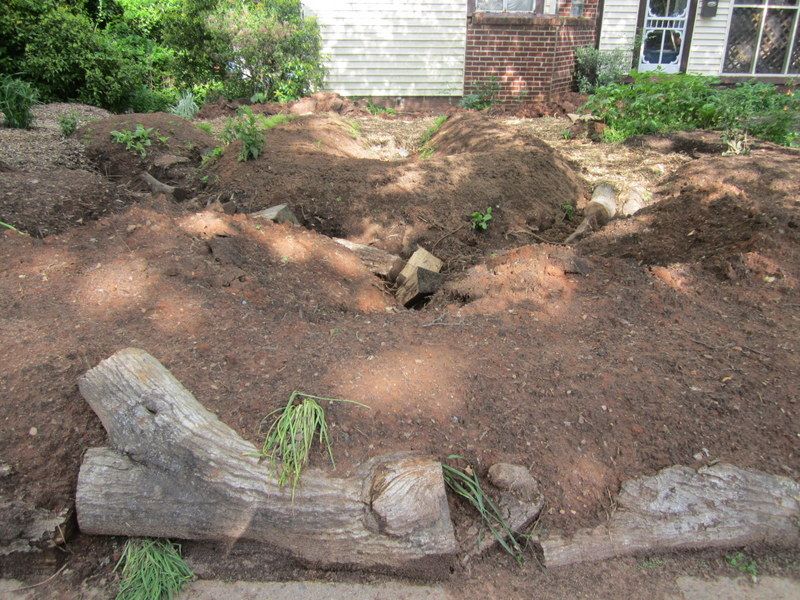
Photo Caption: I knew that erosion had been a problem with the old raised beds so I decided to come up with a retaining wall. Originally, I had planned to purchase the materials to build it, but it occurred to me that wood would hold the soil in place until perennial roots filled out enough to retain it.
The front yard was designed to maximize planting space and minimize pathways (while being able to easily reach into all the beds for weeding, harvesting, and other chores). We also wanted to reduce or eliminate watering needs without purchasing a drip irrigation system. Giving the paths a dual function as water catchment seemed like an excellent way to go, but we also double-dug each bed and put hugelkultur at the bottom before replacing the soil. The wood and wood chips under the beds and in the paths will retain water and break down to feed soil organisms and plant roots.
It’s important not to mix the wood in with the soil or it will break down too quickly and steal nitrogen from the plants. We put 8″ – 20″ of topsoil on each bed as our immediate growing medium. It was in decent shape, but will improve in tilth as the earthworms mix in all the organic matter.
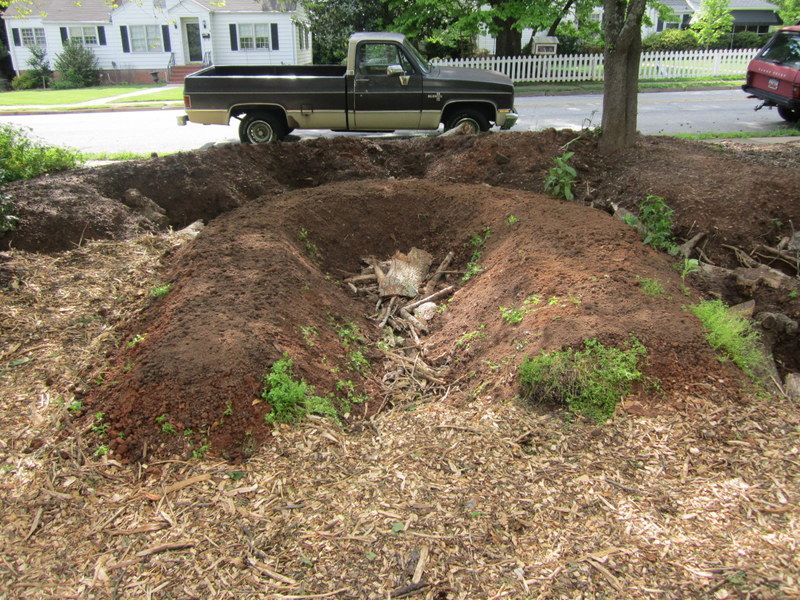
Photo Caption: It’s easier to see the differentiation between the raised beds and the pathways in our earlier photographs. Once all the mulch was added the landscape blends together on camera.
A local tree removal service has been delivering our logs and wood chips right to the driveway. This is a windfall that is available in most cities since tree services have to pay a fee to drop their loads at the landfill. It becomes a win/win since we’re recycling the materials and the tree service saves fuel and cash when they don’t have to truck everything to a waste site.

Photo Caption: I’m concerned about the color of this redbud’s inner rings, especially since it has been looking sick the past couple years. I’ve never seen a larger redbud trunk so I suspect it is on the latter end of this tree species’ average lifespan. We had to cut a couple old branches because the tree has started to lean into the paved walkway that leads to our door and mailbox.
We also cut some wood in our own yard since we have some trees that needed attention. Two of our trees have been increasingly sick for several years so we cut one entirely and are planning to remove the other as well. This will increase the amount of sun available to our front yard garden and give us wood we can use in the landscape.
The focal tree of our front yard is a gorgeous old redbud with three massive trunks. In recent years their weight has caused them to lean away from each other and block the walkway to the front door. We cut two thick branches to make it easier to navigate the front yard and added them to our hugelkultur mounds.
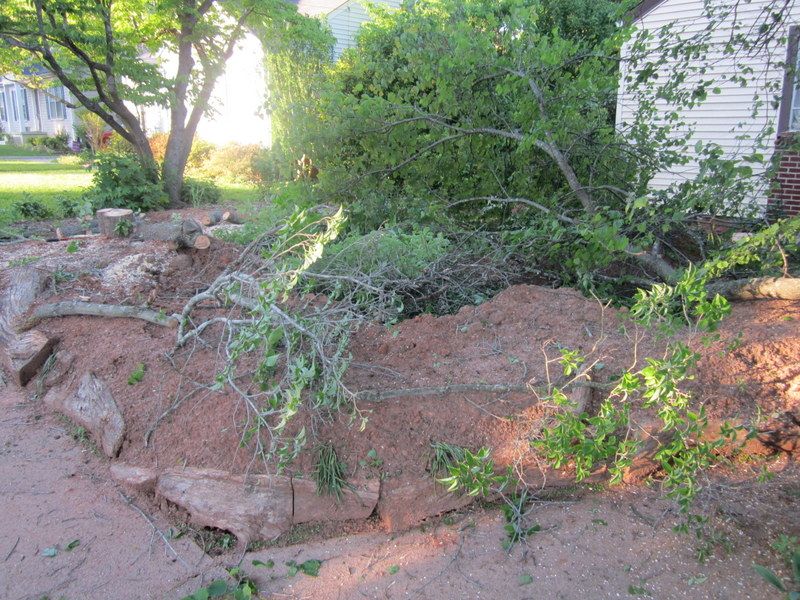
Photo Caption: We cut a sick tree and two massive redbud branches which ended up increasing the biomass of our hugelkultur project. It also opened up a lot of sun for the plants we put in the front yard.
By the time we finished, the hugelkultur mass in some areas of the beds was 4′ or more deep. The mounds will diminish in size as they break down, but right now they are quite sculptural.
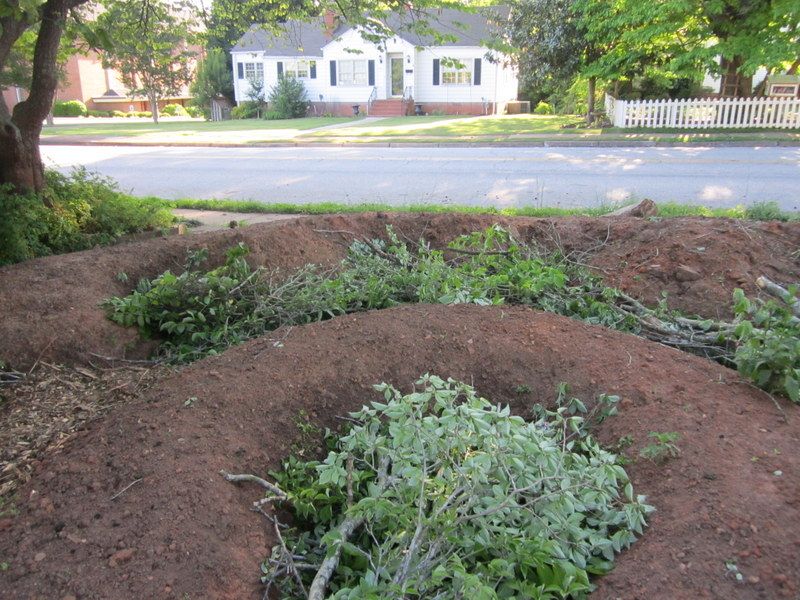
Photo Caption: Our hugelkultur kept growing as we cut branches and trees. These branches were piled on top of the wood already seen in the first photograph.
Here’s a series of five photographs taken from the same spot that shows the yard as it progressed from March 20th (the day we broke ground in the front) until now:

Photo Caption: March 20th, 2013 was when we started to dig up what was leftover from last year’s sheet mulching. The green patches are chickweed.
It turned out to be a slow project that was frequently stalled by heavy rains. The smoothed beds in the following picture already have hugelkultur underneath them. We did the beds first and then the paths because it gave us somewhere to put soil that was in the way.
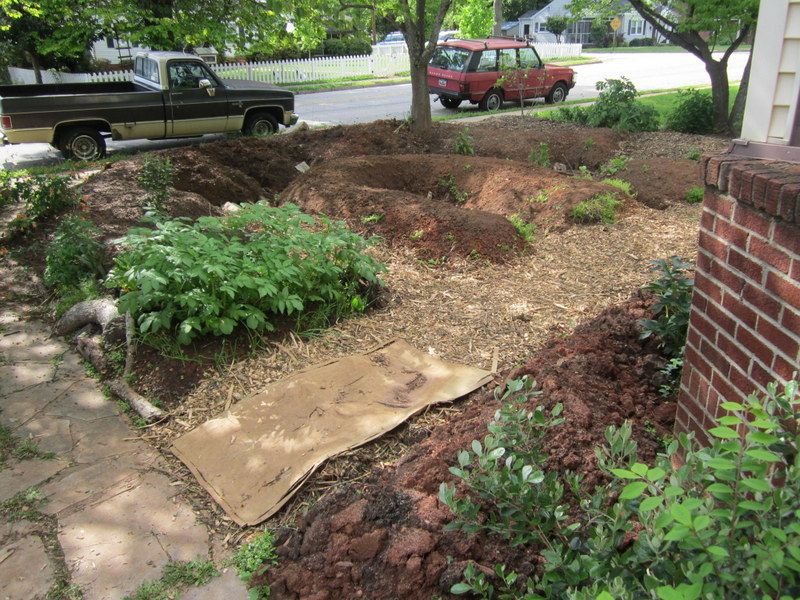
Photo Caption: In the early stages we made beds around the few plants we decided to keep and I put some spring vegetables (potatoes, chard, onions, cilantro, and flowers) in a 2′ x 5′ section that we’d already finished. It’s easier to see the paths vs. beds before all the mulch was added.
The cardboard sheet in the picture was there to keep the wheelbarrow from tearing up the new path. We removed it after everything was thickly mulched.
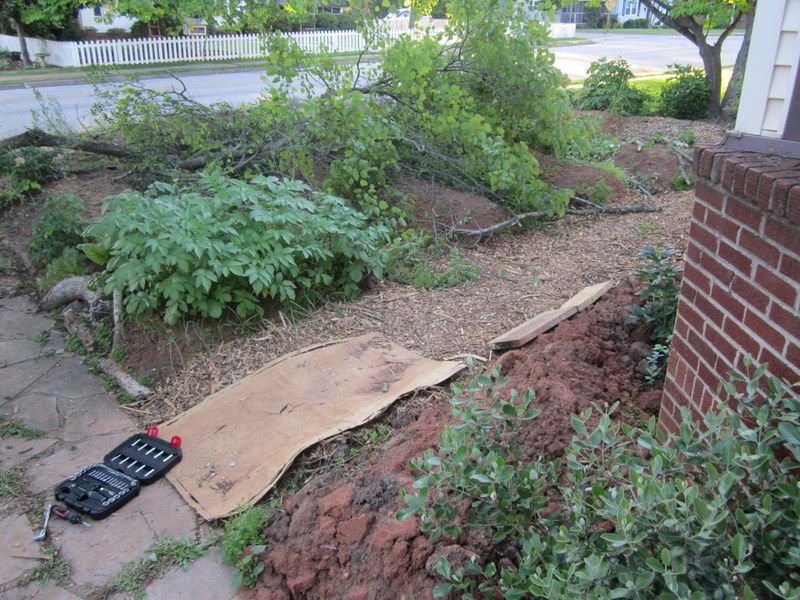
Photo Caption: Most of the beds were already hugelkultured and finished before we cut the tree and redbud branches. We chopped up the wood and put it into the swale paths.
The last week of the project I’d wake up every day hoping to finish before I went to bed… it always takes so much longer than I think it will. My schedule was so busy I got up at dawn three mornings in a row to finish everything before I left for a permaculture class in Asheville (more on that, later). I was terrified that the potted plants we bought would die while I was away for the weekend. Plus, I can’t tell you how excited I was to get to plant things after all that prolonged earth moving and labor! I officially finished on May 17th.
Since we did so much digging and disturbing the soil life, we decided to purchase a product called Great White to inoculate our plant roots with symbiotic bacteria and fungi. In the future we have no plans to do heavy digging (and definitely no tilling) in order to protect our soil food web. We also inoculated our wood chip paths with king stropharia mushrooms that our friends at Tyrant Farms gave us.
You can’t see it here, but we’ve got a very cool social area planned into the design that I can’t wait to unveil (but I have to, since it involves some construction).
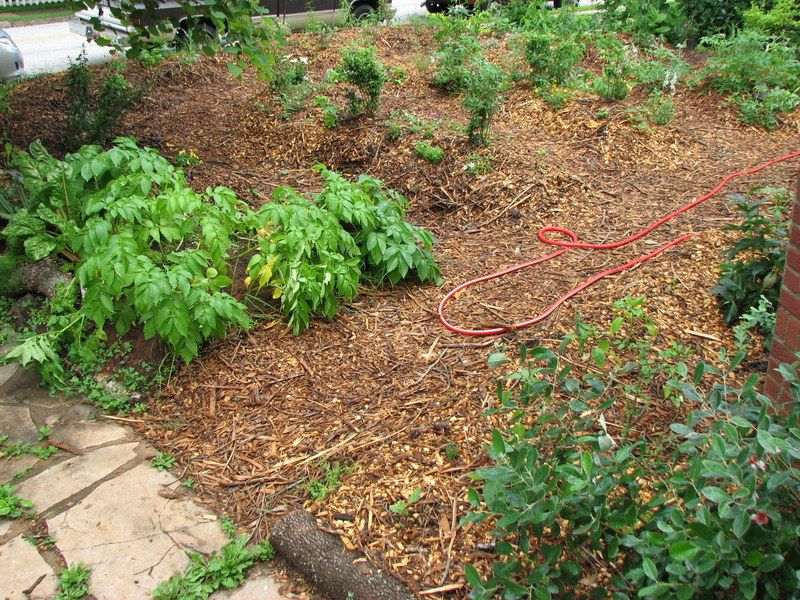
Photo Caption: Here it is again today, June 4th, 2013. Most of the plants are growing in leaps and bounds, though a few xeriscape species are not thrilled about how well the soil retains water.
Now for the fun part… the plants!
Off the top of my head the front yard plan contains 2 goumis, a goji berry, 15 tomato plants, 10 blueberries (4 compact, 4 rabbiteye, and 2 creeping), an aronia, 3 pawpaws, a gooseberry, 2 pineapple guava, 2 olive trees, 2 pomegranate trees, hardy citrus (still in pots – a kumquat and a satsuma), a prickly pear cacti, thornless blackberries, black raspberries, red raspberries, regular strawberries, pink-flowering strawberries, musk strawberries, around 20 pepper plants, around a dozen eggplants, half a dozen ground cherries, a bunch of sunberries, chard, potatoes, cilantro, rosemary, basil, lots of different sages/salvias, lemon verbena, thyme, parsley, celery, Okinawa spinach, creeping raspberry, fiddlehead ferns, 2 mountain mints, monarda, anise hyssop, yellow potato onions, French red shallots, bulb onions, Georgia savory, 2 established star anise shrubs (that don’t produce and may get replaced with yaupon hollies), spring beauties, columbine (A. canadensis), dutchman’s pipe, snakeshead iris, narcissus, summer snowflake, saffron crocus, perennial cyclamen, perennial begonia, perennial fuchsia, gentian, thalictrum, lantana (great for beneficial insects), hearts-a-bustin’, weigela, clethra, oakleaf hydrangea, Buddleia ‘Evil Ways’ (compact), Brugmansia ‘Miner’s Claim’ (not near road, since poisonous), shasta daisies, coreopsis, native sunflowers, goldenrod, clovers, agastache, native mallows, milkweed, Amorpha canescens, Indigofera sp., hardy geranium, sea hollies, zinnias, cosmos, hellebores, hosta, chrysanthemum, aster, Japanese anemone, ligularia, acanthus, rudbeckia, echinacea, lavender, comfrey, baptisia, amsonia, lespedeza, lily-of-the-valley, patridgeberry, epimediums, stokesia, passionflowers, corydalis, several different verbenas, pinellia, penstemon, balloon flower, roses, nicotiana, gomphrena, liatris, hens & chicks, sedum, Calla ‘Green Goddess’, muhlenbergia grass, Northern river oats, oenothera, perovskia, rabdosia, veronica, tiarella, heuchera, violas… you get the idea — diversity out the wazoo!
The variety of plants that can fit in the same space as a lawn is astonishing!

Photo Caption: We bought four compact blueberries as the highlight of the middle keyhole bed. Normally I pull fruit and flowers off my new transplants but these had such large, established potted root systems and were so close to ripening that I decided to leave them and see what happened. Two weeks later we were snacking on sweet fruit!
Our plant choices are a mixture of perennial and annual edible plants, wildlife attracting flowers (called “nectary plants” by permaculturalists), and fertility boosting plants (they either suck nutrients up from deep in the soil with their long taproots or are nitrogen fixers that work with symbiotic bacteria to convert nitrogen gas into a form plants can use).
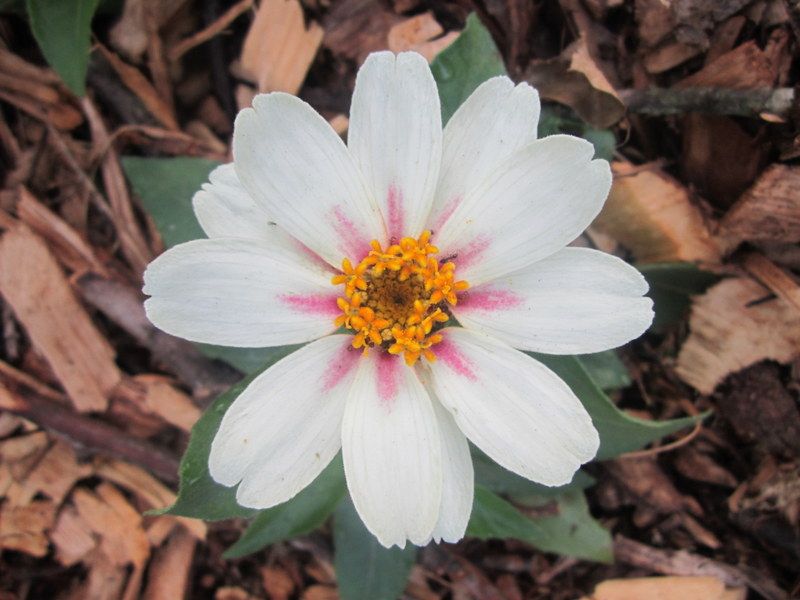
Photo Caption: Short zinnias stay out of the way of main crop plants while attracting beneficial insects right where you need them. This one is planted adjacent to some pink-flowering strawberries next to the sidewalk.
When I was pulling weeds I discovered a long-forgotten and long-suffering pawpaw seedling struggling to get by. I carefully mulched around it and put a stake in the ground to mark the spot, but it has already doubled in size this season. I plan to put a second pawpaw right next to it — neither tree will obtain its full size but they will grow together to fill the space while boosting each other’s pollination rates.
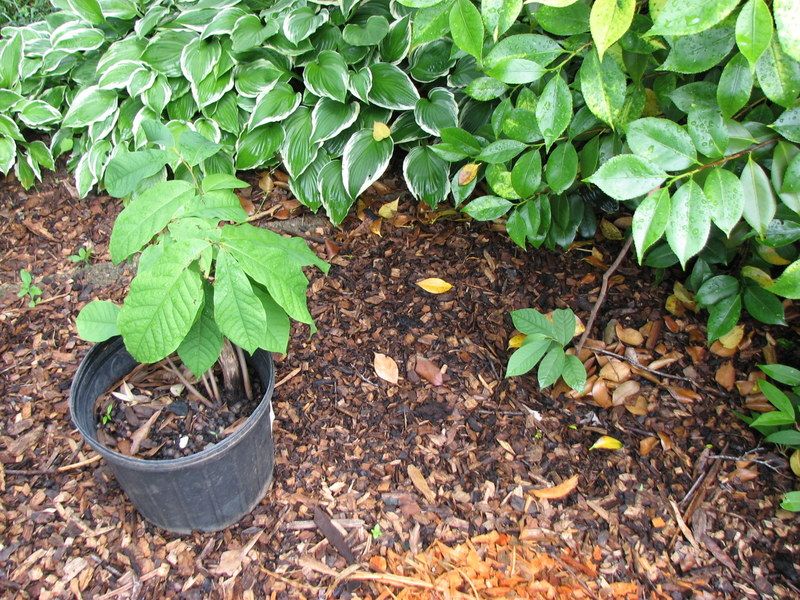
Photo Caption: The little pawpaw on the right was buried under some ruellia and weeds. The potted one on the left has been hanging out next to the faucet for a couple of years and would prefer a permanent home. Their northern corner won’t shade the rest of the garden.
Since I was trying to keep focused on crowd-pleasing aesthetics I chose pastel flower colors with an emphasis on pinks, whites, purples, blues, and pale yellow.
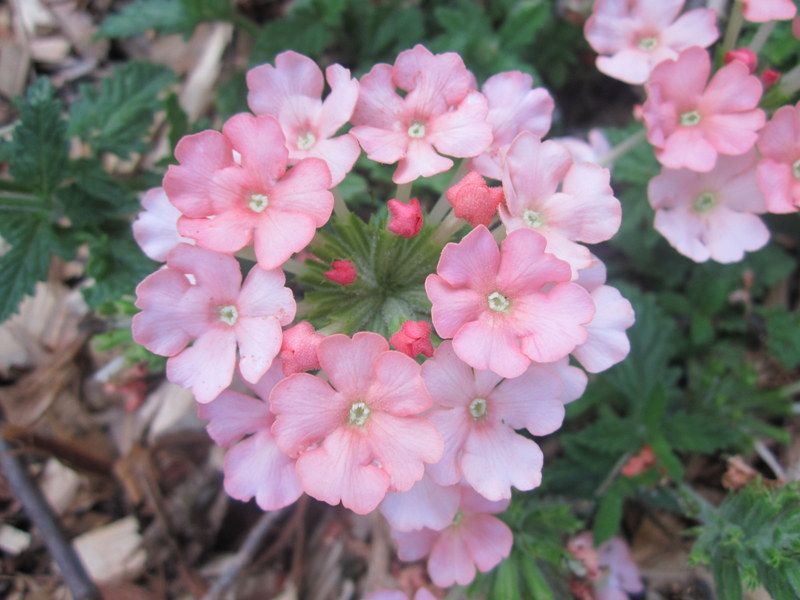
Photo Caption: This low growing perennial verbena was chosen for its peachy-pink color and its beneficial insect attracting potential.
All but 2 of the 15 tomato plants in the front yard were volunteers, most likely the variety ‘White Currant’ since I grew it in the shrub border last season. We worked around them when putting in the raised beds (and transplanted a few) and they seem very happy with their newly mulched environment. I’m particularly hoping the “Great White” fungi & bacteria product we inoculated them with will help ward off Fusarium wilt and other diseases.
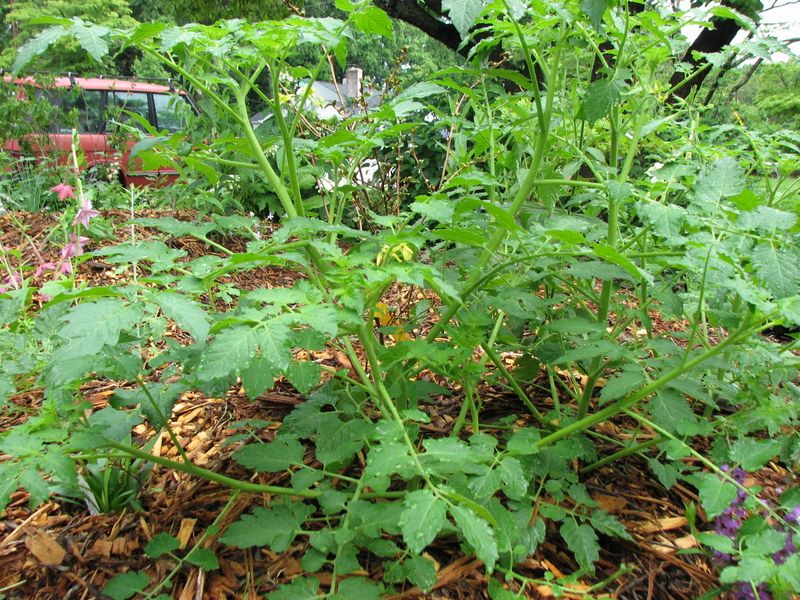
Photo Caption: This volunteer seedling is likely a ‘White Currant’ tomato which produces well from full sun to part shade conditions. The tiny, pale fruit means it requires less sunlight to ripen. We plan to let them ramble on the ground between the other plantings.
Nathaniel bought me this compact oakleaf hydrangea shrub for my birthday shortly after he proposed with a hydrangea engagement ring (it has an adorably tiny conflict-free diamond). Ironically, I tried to garden while wearing it which resulted in me bending it in less than a week. We had it re-shaped but now it sits indoors when I’m gardening.
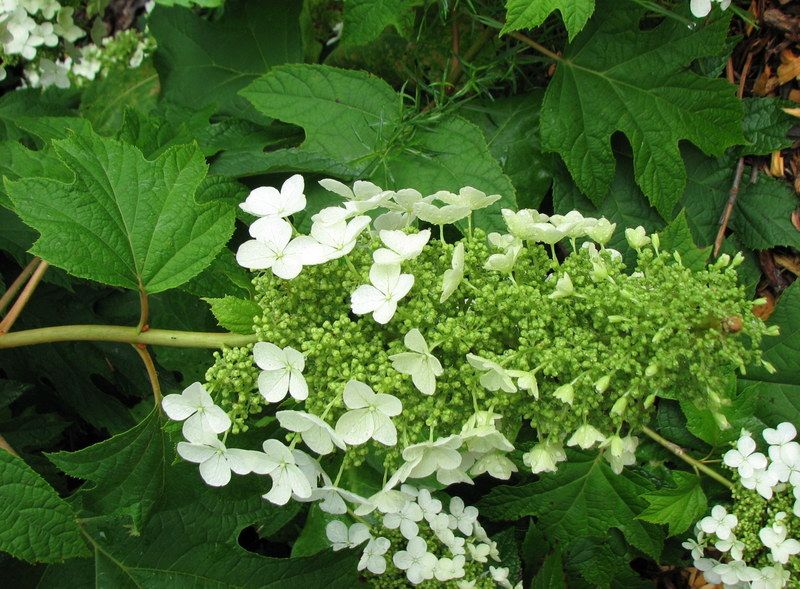
Photo Caption: Our oakleaf hydrangea just started blooming. The wispy plant weaving through it is Appalachian mountain mint.
I really love unusual fruits and vegetables, especially perennial ones, but I made sure to plant a lot of popular, recognizable food in the front yard. Rainbow chard is a great choice since it is beautiful and often lasts for an entire season as a cut-and-come-again vegetable. I think my neighbors will feel more inspired to see food they regularly put on their tables (and recognizing a plant you know is like saying “hi” to a friend).
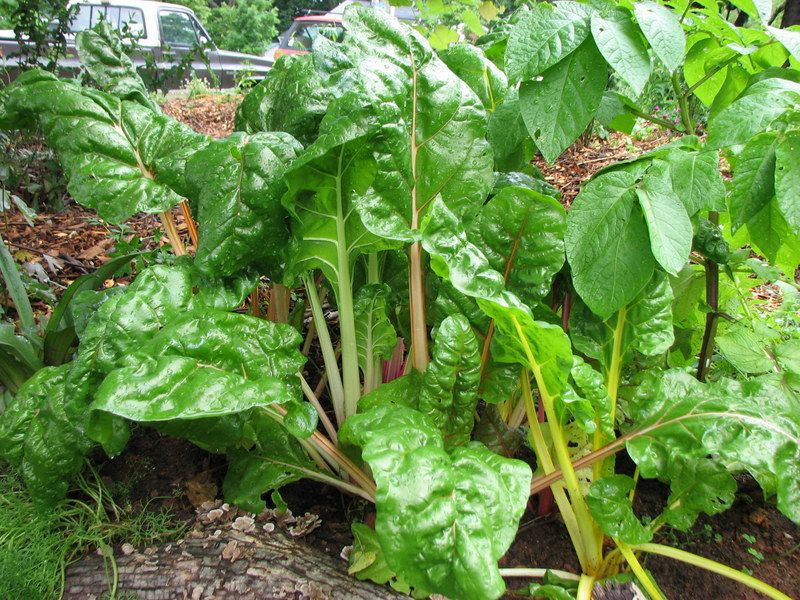
Photo Caption: Chard, potatoes, cilantro, onions, clover, and chickweed make up this small annual vegetable guild. My daughter and I love to eat chickweed in our spring salads. I can’t argue with a plant I don’t have to sow that is an attractive succulent with cute white flowers. It’s easy to pull, but since it hates heat I find it usually dies back before getting in my way. Especially in this bed, since I still haven’t mulched this segment (it was planted early before the project was completed and I’ve procrastinated because I hate mulching beds with established plants).
Achillea, or yarrow, is one of the best beneficial insect attracting flowers I know of. The tiny predatory wasps and little bees I particularly want in the garden tend to love it. I chose this perennial yarrow for its short stature and planted it on the retaining wall near the sidewalk.
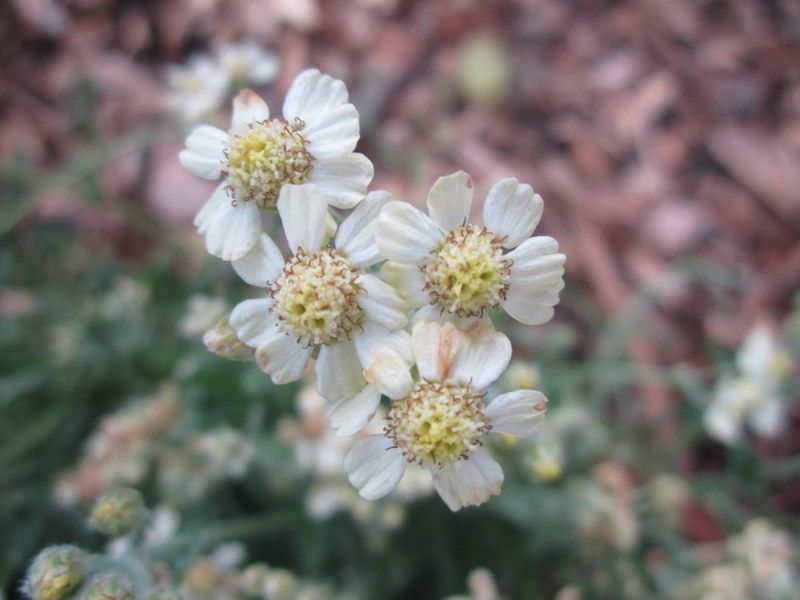
Photo Caption: Yarrow blooms are small but are borne in abundance. It’s also tolerant of drought and poor soils once established.
One of our two pineapple guavas bloomed this year for the first time, I’m so excited! We planted them next to a sunny brick wall at the front of the house since they like hot and bright conditions. You can eat the flower petals without damaging the fruit production — they taste so sweetly tropical that I have to compete with sugar ants to get them. We aren’t expecting fruit this year since we read they need a pollinator, and only one of them flowered.
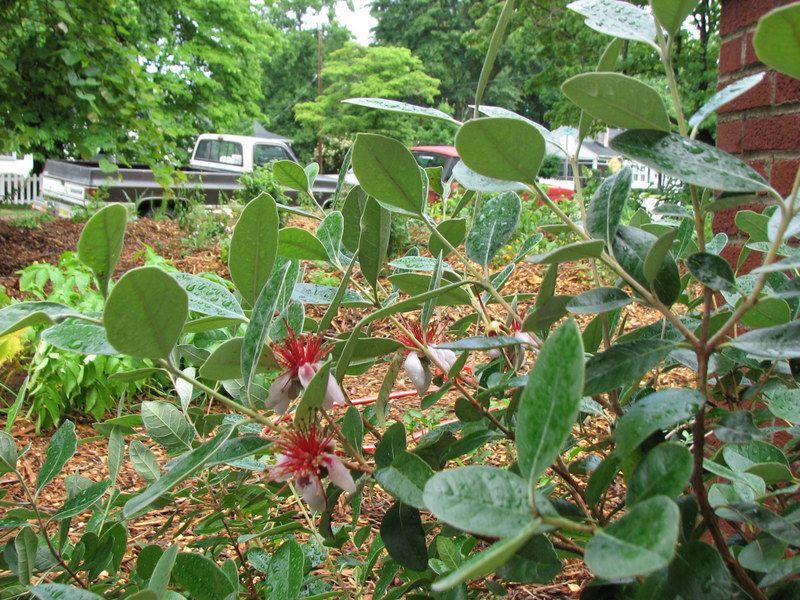
Photo Caption: Pineapple guava flowers compete with passionfruit as an exotically beautiful addition to our garden. As an added benefit the plants were reliably evergreen all winter, so they’ll look nice as a foundation planting.
I’ve been growing splianthes since my daughter was little because the blooms remind me of the weird eyeballs growing along the bricks in the movie Labyrinth. She thought they were pretty funny. Apparently, it can also be used as medicine similar to Novocaine, thus its common name of “toothache plant.”
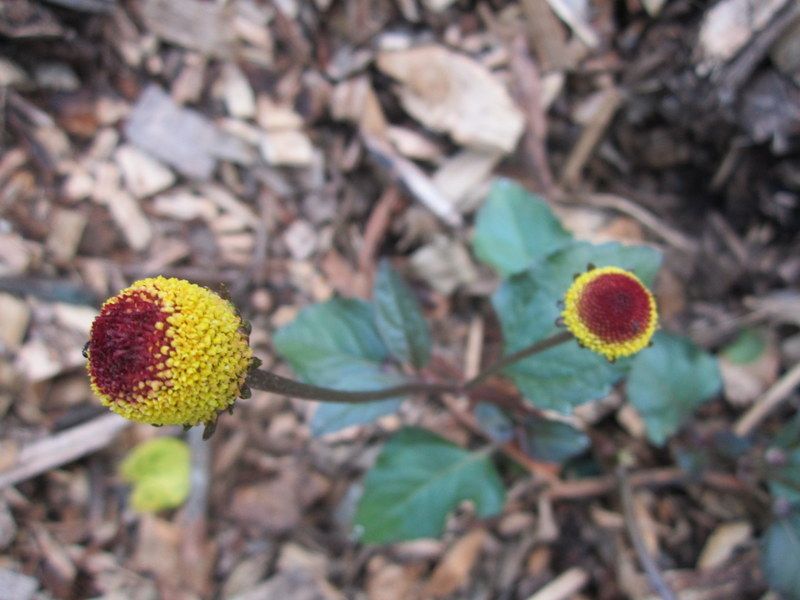
Photo Caption: This is Splianthes ‘Peek-aBoo’ which attracts beneficial insects and can be used as a toothache pain relief.
The number of times I’ve bought and planted ostrich fern through the years because I wanted to grow my own fiddleheads is endless… but I never hugelkultured first! I’m hoping the reliably moist soil and shady spot under the redbud will finally enable my success. I’m looking into some other fern species to try once I get additional shady patches in the yard ready for planting.

Photo Caption: I’ve killed ostrich fern a lot… so at least I know what it doesn’t like. If this one lives, it should spread and eventually provide us with a harvest of edible fiddleheads.
Musk strawberries were an impulse buy this year when they went on sale. I hope they last long enough to produce the fruit. Right now the roly polies (pillbugs) are munching them.
Most of our plants seem to love the newly hugelkultured beds, but this little hens & chicks plant is miserable. The center of the plant has started to rot and I’m not sure if it will make it. Nearby is a dianthus that has decided to kick the bucket (the pillbugs are eating it, too) but I think that was my fault for planting it too deeply. At the base of the sidewalk you can see our dutch clover seedlings coming up, I sowed it in the cracks between the beds and pavement all along the edge of the garden.

Photo Caption: The little hens and chicks plant doesn’t like the moist hugelkultur beds but the clover coming up next to the sidewalk is doing great.
We are watching the moisture level of the garden and plan to fill the paths with more mulch if it looks like the beds are drying out too quickly. Theoretically, we could fill the paths right up to the same level as the raised beds. However, the soil is so wet that right now the exposed sides of the raised beds seem to be helping it drain. I guess it is a good problem to have — it hasn’t needed watering since the day we put it in.
A not good problem to have… or at least a neutral one… is this:
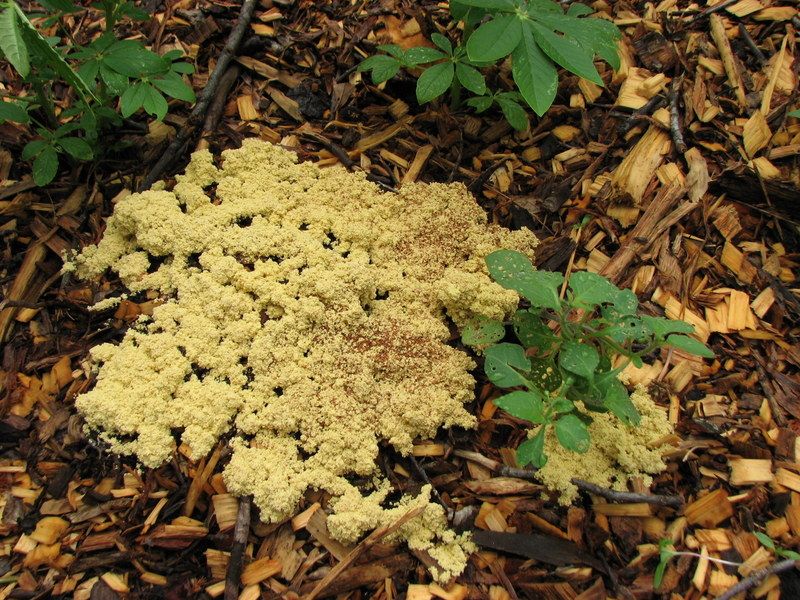
Photo Caption: Dog vomit slime mold seems to start out bright yellow and fade to gray. It can cover nearby living plants and eat them once they are smothered, but it mostly wants the wood chips.
So far I haven’t seen any king stropharia popping up. Since we are striving for eye-appeal, Murphy’s Law has given us plenty of dog vomit slime mold. I hope it isn’t the only fungi species that took hold in the mulch.
It isn’t really hurting anything (though when it grows vigorously it can cover and smother foliage) but it’s not the ambassador I’d choose for introducing the neighbors to mushroom production.
We already have mushrooms growing in the back, but they aren’t visible from the road.

Photo Caption: If you look next to the house you’ll see two large star anise shrubs flanking a mostly hidden path to the backyard. We’ll be cutting down weeds and sheet mulching that shady area to use for mushroom production. We also may replace the star anise — which smell like dead animals when they bloom and don’t seem inclined to make seed heads for spices. We think dwarf yaupon hollies would be more productive (and equally evergreen).
Mulch and moisture means we have more mollusk pests, which are not typically a problem in the upstate. I’m keeping an eye on their levels but they’re another good reason for us to eventually get some ducks.
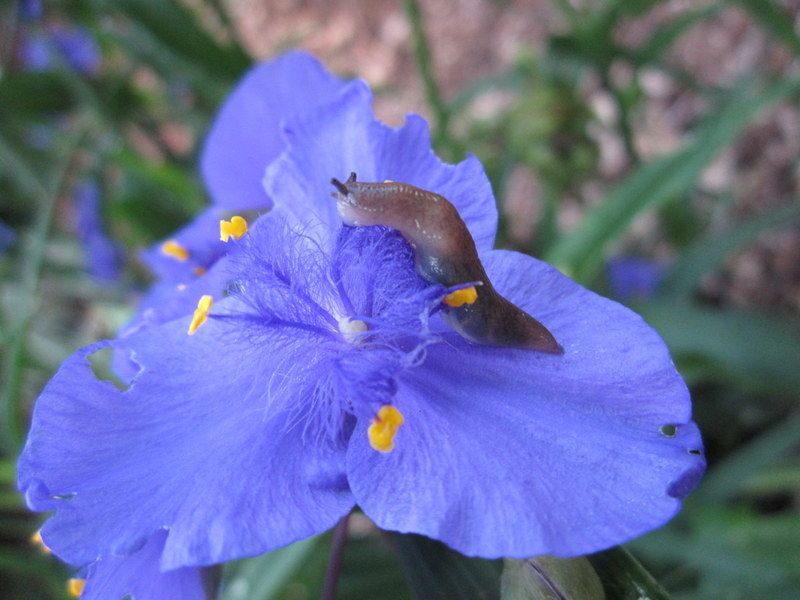
Photo Caption: This spiderwort is incredibly attractive to true bumblebees (as opposed to carpenter bees, which many people dislike). I see dozens of them collecting pollen from its blooms every morning. This slug is also enjoying a snack of high-protein pollen.
Our verge is narrow but it gets unruly easily, especially now that we don’t have anything else to mow. I’m probably going to sit down one morning and weed out the non-clover bits so it stops getting tall. I’ve been trying to think of something edible to put there, but maybe I’ll just grow some sterile comfrey. Too many dogs use the verge as their restroom to make me want to plant edibles like strawberries.
I used the last scraps of our mulch pile for the new hugelkultur beds, but fortunately we just got 2 more loads delivered. Now I can move on to finishing the front and starting on the back. We also received a large supply of logs that we can use for more hugelkultur.

Photo Caption: Lots going on in the driveway! If you look behind the mulch you can see our two pomegranates (bowed over from the rain — I’m not sure Mediterranean species are used to our downpours). Our brambles (thornless blackberries, black & red raspberries) are trellised along the cinderblock wall. Close to the road are our two newly planted olive saplings. If I can get some comfrey root segments I may try planting them in the cinderblock holes. I didn’t notice it until looking at this photo but it seems like the school’s groundskeeper must have sprayed herbicide along the edge of our property… I hope it won’t hurt the bees.
Here’s a long view of our bramble trellis if you’re facing the road. We’re very happy that Anna and Mark from The Walden Effect were kind enough to give them to us. We’ve been sheet mulching the driveway up to the brambles in an attempt to get the Bermuda grass in this area under control. Once the mulch starts to break down we will seed it with Dutch clover.
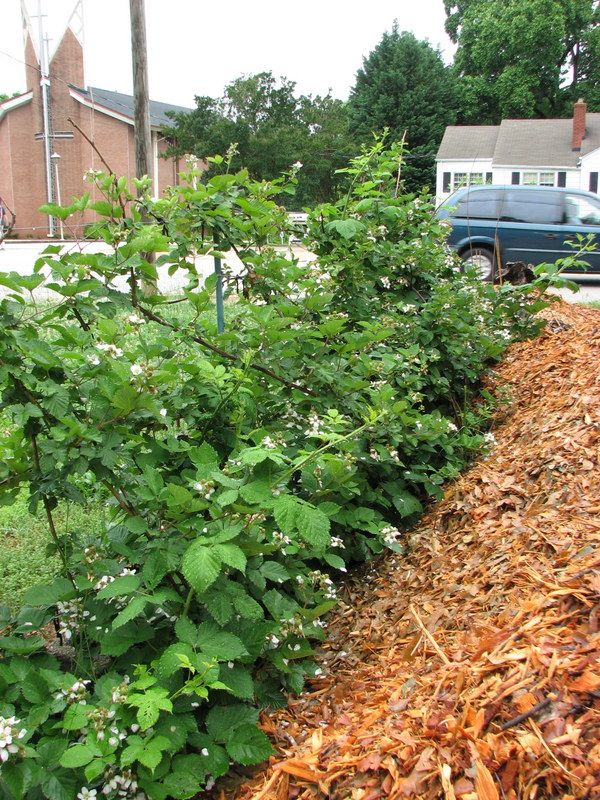
Photo Caption: Our thornless blackberry is in bloom plus we’re already harvesting the earliest black & red raspberries.
Our new olive trees are about 18″ tall right now and growing rapidly. We thought the formerly gravel driveway would be the perfect spot since it has intense sun, heat, and drainage. Through the years soil has built up in the driveway due to weeds that colonized it and broke down, making a decent layer of topsoil. The rocky underlayer provides excellent drainage for the plants growing there. We also wheelbarrowed in excess topsoil from our hugelkultur projects to create a narrow raised bed next to the cinderblocks.
The two pomegranates love their segment of the driveway and we thought the olives would feel the same way. Our prickly pear will likely end up in this location once we’ve developed a hole deep enough to plant it in (it has a huge pot). We don’t plan to hugelkultur this area (beyond a mulch layer) since we’re using it for xeriscape species.

Photo Caption: One of our tiny new olive trees. We sheet mulched around them but they will need a careful eye to weeding since the school’s Bermuda grass creeps into the driveway.
Speaking of the pomegranates, they’re loaded with blooms this year! Last year we didn’t get much fruit (normally we get more than we can harvest) and I think it is because I gave them too much fertility. They seemed to be producing leaves at the expense of fruit. Now that they’ve been neglected, they’re on track for a great harvest.

Photo Caption: This pomegranate has been passed down in my family for five generations. We also grow a named variety called ‘Wonderful’ but the passalong one will always be our favorite.
Spending all that time on the front yard was at the expense of the back gardens. Last week I started digging a backyard hugelkultur bed where I can put the rest of our annual veggies. We have a lot of transplants still languishing in their seed trays.
Here’s our updated goals (superimposed on a Google satellite photo of our yard because I’m too busy to have drawn it to scale yet):
I’ve changed this plan several times over the last year, most notably since this post with a different version. One of the biggest catalysts was the lack of an urban farm tour in Greenville this past spring. Since they didn’t have it, we felt free to renovate the entire garden (and live in a construction zone for a while).
I also changed our water catchment plans to include a much larger pond. We had a sprawling herb garden behind the deck and it occurred to me that I could put the pond there and move all the herbs to an herb spiral to save space. We’ll probably have a second, smaller pond lower in the landscape that catches some of the runoff. Another hope of mine is to eventually replace our shingles with something that doesn’t contaminate the water. In the meantime, a lower cost solution may be to mycoremediate it.
Another major change is that the more I read about how healthy soil food webs destroy diseases like Fusarium wilt, the more inclined I am to just get rid of our 4 quadrant crop rotation plan. I’m leaning toward putting in beds with mixed perennials and annuals to make sure that there are always living roots in the soil feeding our soil organisms. I also like the idea of hugelkulturing everything for water retention instead of putting in the drip irrigation we’d planned. Plus, I can plant things like columnar apple trees and other dwarf woody fruit.
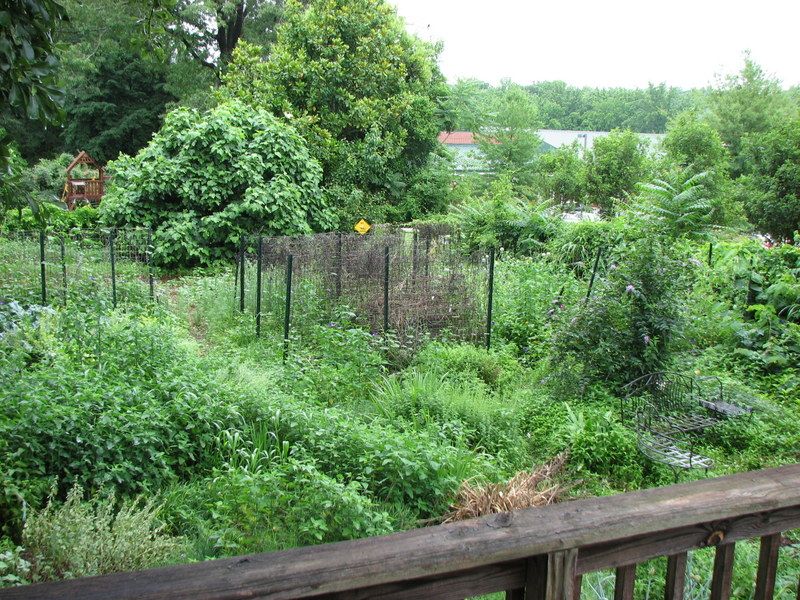
Photo Caption: This is how it looks today. A pretty big chunk of the green here is lamb’s quarters… which I don’t mind. I do mind the sprawling patches of mugwort, but hope to destroy them with some industrial strength sheet mulching.
The chicken run is still overgrown with weedy vines (I’d hoped their scratching would kill it, but it seems I need to kill the weeds for them at least once and then let them maintain it). We have a vigorous supply of periwinkle, English ivy, poison ivy, Japanese honeysuckle, and Carolina snailseed that all the neighbors in this area seem to trade back and forth (we need to do a better job coordinating our eradication efforts — right now one person removes it from their property and it crawls back in from the adjacent lot).
Our peach and pear trees are enormous now and do a good job keeping hawks off of the chickens. I haven’t decided if I am going to prune the branches back or replace them with better (and better placed) varieties. I think I can get a lot more fruit into that area if I plan the spacing better.
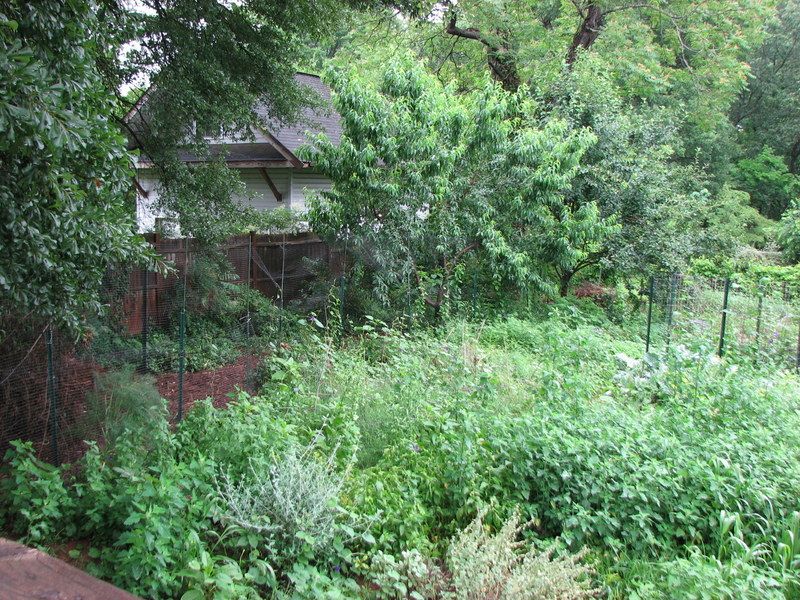
Photo Caption: This view of the orchard and chicken run was taken on the same day as the previous photo.
We did hugelkultur a couple small beds in the back around February so we could put in some winter crops. Most of our brassicas end up in batches of Nathaniel’s delicious kimchi.
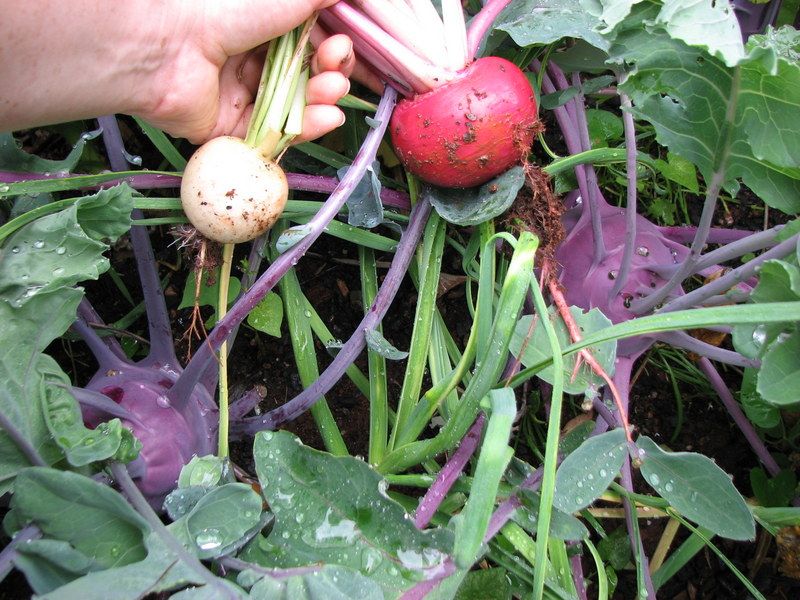
Photo Caption: Turnips, kohlrabi, radishes, garlic, kale, spinach, bok choy, arugula, mustard, raab, carrots, snow peas, and lettuce have all been productive this spring.
Our Passiflora caerulea doesn’t produce fruit, but it is evergreen and attractive. It was given to me a long time ago as a rooted cutting from the Roper Mountain Science Center butterfly garden and definitely does a great job hosting gulf fritillary caterpillars each season. It’s also a popular stop for carpenter bees, who get drunk on the blossoms. For delicious tropical fruit we can count on the edible (and native) Passiflora incarnata. Additionally, Passiflora lutea pops up here and there with its tiny yellowish blooms.

Photo Caption: Since it is evergreen and doesn’t die back to the ground each year, Passiflora caerulea blooms a lot earlier than Passiflora incarnata.
The garden has some volunteers from last year, such as this squash plant. I keep thinking I’m going to weed around them and see what happens… but we’ll see what happens.
I’ve loved our southern catalpa tree since the day we moved in. Eventually, it is going to crush my shed, but we love the orchid-like blooms that appear each season. I’m also more than suspicious that the copious amounts of parasitized catalpa sphinx caterpillars crawling on the leaves breed huge populations of the predatory wasp that controls tomato hornworm (also a sphinx moth). I talk more about that in my natural pest control post. What I know for sure is that I grow a ton of tomatoes and never see any hornworms.
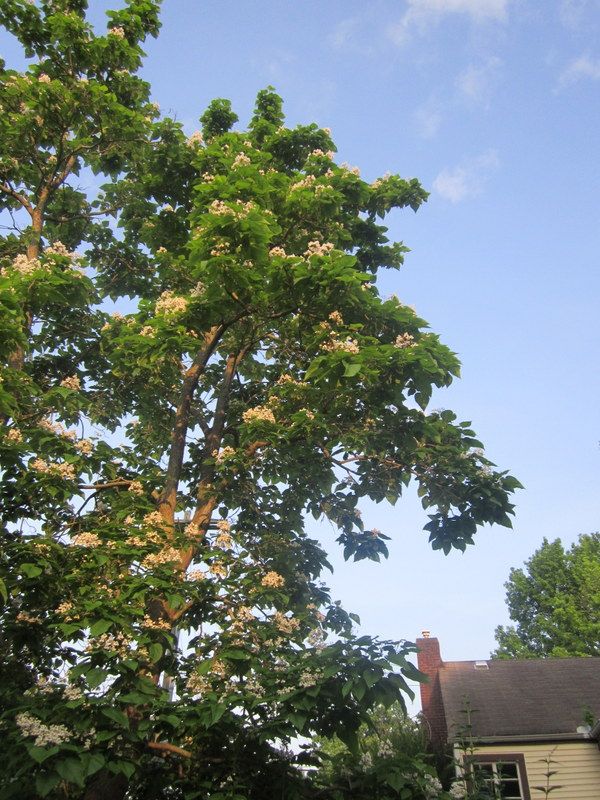
Photo Caption: Our catalpa tree is a show-stopper when it blooms each spring. It was a lot later to emerge this year than usual.
If you take a tree with enormous heart-shaped leaves, give it orchid-like flowers the size of golf balls, and generously cluster them on the tip of each branch in fat bouquets, you have a natural show-stopper. Need more reasons to grow a catalpa? They’re also gorgeously fragrant.
I was considering the logistics of planting some ‘Golding’ hops (a gift from a member of the Upstate Brewtopians) under our catalpa tree and coaxing it to grow up into the branches for support. I wasn’t sure if the hops would be able to tolerate the shade until it got established so I hadn’t planted it yet. While I deliberated, the hops escaped its pot, planted itself under the catalpa, and can be seen here scrambling up our elderberry and 14′ up into the tree. It is covered in hops cones, even in the shade. So, I guess that answers my question!

Photo Caption: A few feet over my head, our hops vine climbs up the elderberry and into the catalpa tree.
I bought a ton of cowpeas and buckwheat to use as cover crop placefillers in the backyard, but the lamb’s quarters did it for free. I did plant our nitrogen fixing mix in a few spots that were still bare.

Photo Caption: We eat lamb’s quarters every day but barely put a dent in it. I usually pick a few well-sited plants for reseeding and cut down the rest before they flower.
Nasturtiums are another reliable reseeding annual, and we love to eat its flowers and greens. I keep meaning to try to pickle the seeds like capers, which I hear is effective.
I posted the next photo just so my friend Kirsten would try to pull that morning glory through her computer…
Actually, I am excited about two of the plants in this picture. The first, amazingly enough, is poke sallet, which seems like an excellent cut-and-come-again mulch. I also happen to think it is pretty (I admit that this plant, like squirrels, is something I had to cultivate an appreciation for). The second is green coneflower, which i recently learned is also called sochan and is eaten as a green in the spring. I didn’t taste mine yet — I’m waiting for it to flower again so I can be 100% sure I have the right plant. If it is, I’ll transplant some to a couple places in the landscape where it will get different levels of light. I’m told this should give me a staggered supply.

Photo Caption: Sochan, poke sallet, salvia, and some morning glories.
Our Egyptian walking onion patch is consistently reliable, even when the chickens kick them around. I’ve been growing these for about 8 years and they require almost no attention at all. They’re about to get moved again since they are sitting where I want a pond.

Photo Caption: Egyptian walking onions are alien-like and wonderfully productive. We’re also fond of yellow potato onions and French red shallots.
When we don’t harvest all of our conventional onion crop it usually comes back as a perennial, too. The bulbs we get this way are much smaller, but just as edible.
Cilantro ‘Delfino’ is my favorite true cilantro because the ferny foliage is easy to shred into tiny pieces. We’ve found that it comes back true from seed each February and lasts into the early summer. It makes tasty coriander seeds, too.
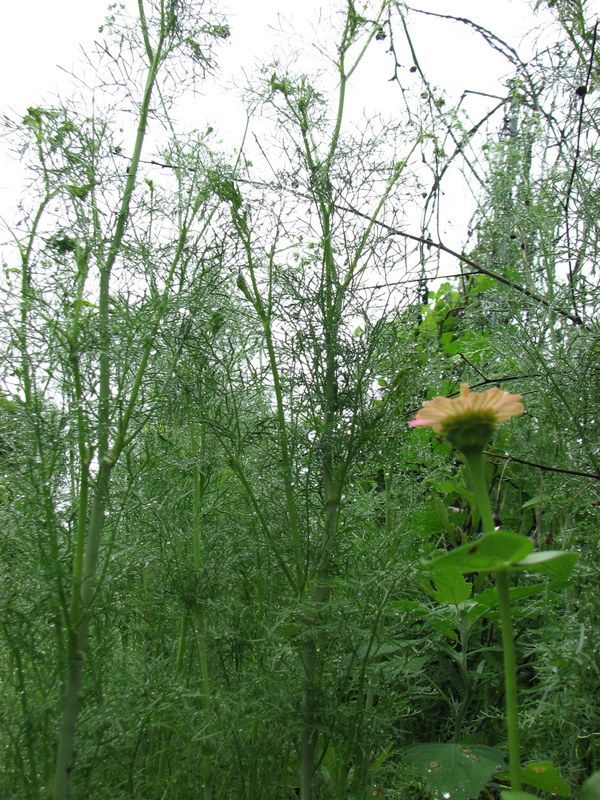
Photo Caption: The ‘Delfino’ cilantro finally started bolting, but it lasted a while first. It’s growing next to a volunteer zinnia.
One of the nice things about having any form of diverse plant cover and lots of flowers is the number of beneficial insects we’ve been seeing in the yard. I found these three lacewing eggs when I was shredding greens to make kale chips. Their larva are so hungry as they hatch that they will cannibalize their siblings… thus the female lays them on thin filaments instead of attaching the egg directly to the leaf.
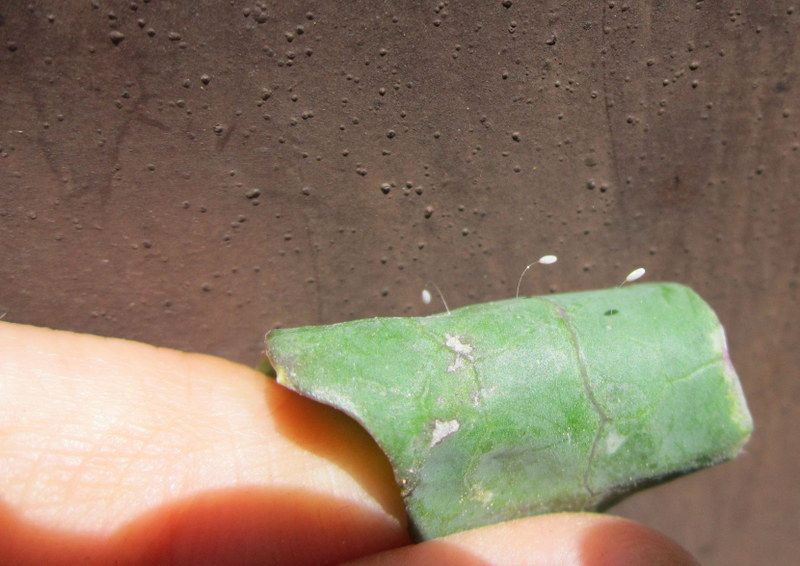
Photo Caption: Lacewing eggs are often mistaken for fungus, but they’re an excellent beneficial insect!
This pollen coated ladybug is one of many species we see in the yard (I saw a yellow ladybug walking on a cobalt blue chair today and was bummed my camera batteries had died).
I wish beneficial insects could do more to help our peaches. The tree is loaded, but most are pock-marked and oozing a nasty gummy substance. If anyone has suggestions for disease-resistant peach varieties, we’re very interested in learning about them.
Our ‘Keifer’ pear must have heard me telling people that I was going to cut it down because it is fruiting fairly heavily this year. However, the fruit is still only on the tips of the branches. Anyone know why that happens?

Photo Caption: If they stay on the tree until ripe we’ll make my grandmother’s caramelized pear jam recipe out of these hard ‘Keifer’ pears.
One of the smartest things I did was plant cover crops in the bare patches this year. I knew I couldn’t get the beds developed in time to plant veggies, so this ensured that fewer weeds could take hold. The clay-loving wildflower mix we bought seems to be about 90% cosmos even though it was supposed to be made up of over 20 species. Good thing we like cosmos. We also have buckwheat, cowpeas, and lamb’s quarters.

Photo Caption: In the foreground is the area I am turning into a new hugelkultur bed for our vegetables. Behind it are 3 rows of cover crops plus our muscadine vines and fig tree.
At some point I’m going to write an update on our apiary since a lot has happened to get it up to 3 hives. I’ll let you know when I think it is going well… right now it is just going. I recently wrote an article about my trials in beekeeping for Edible Upcountry, which you can pick up on local magazine racks right now.
Our chickens are one of the most successful elements of the garden. We just love how our coop opens on to the deck and the wonderful colored eggs we collect.

Photo Caption: This side view of the coop lets you see the temporary run they can use if we haven’t let them out yet in the morning. A ladder allows the birds to walk up into their roost and nesting boxes.
So far they haven’t gotten back out in the garden. If you’re familiar with our Houdini birds, you will know how joyful we feel to have finally contained them.
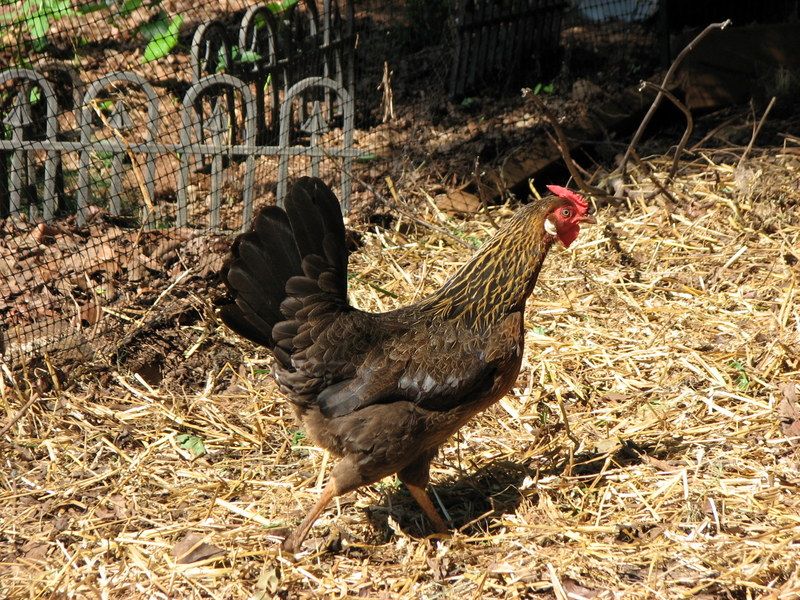
Other eventual hopes are solar panels, a cob oven, additional oil & carbohydrate sources, and more. We’re trying to pace ourselves and keep an eye on our main goal — spreading the knowledge so everyone can achieve this for themselves.
What are your garden goals?
~Eliza
8 thoughts on “How to “Permiculturefy” an Urban Farm”
Comments are closed.
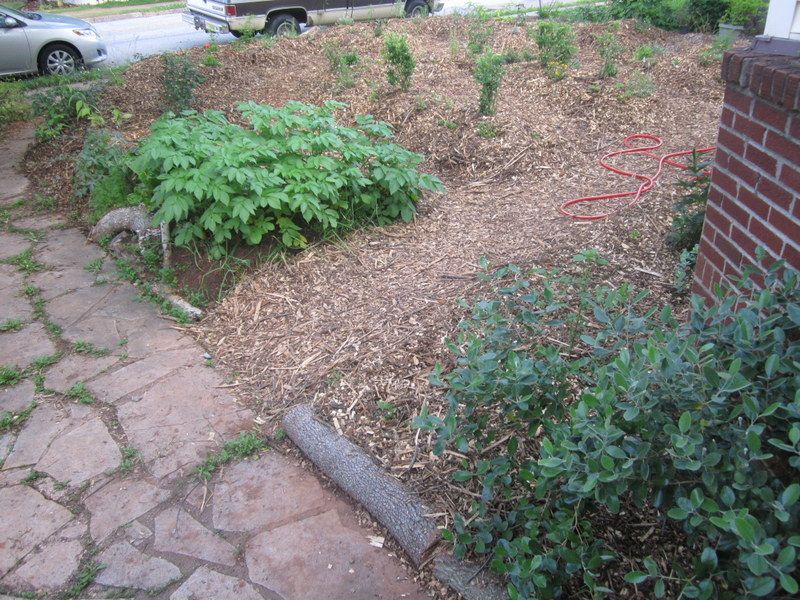
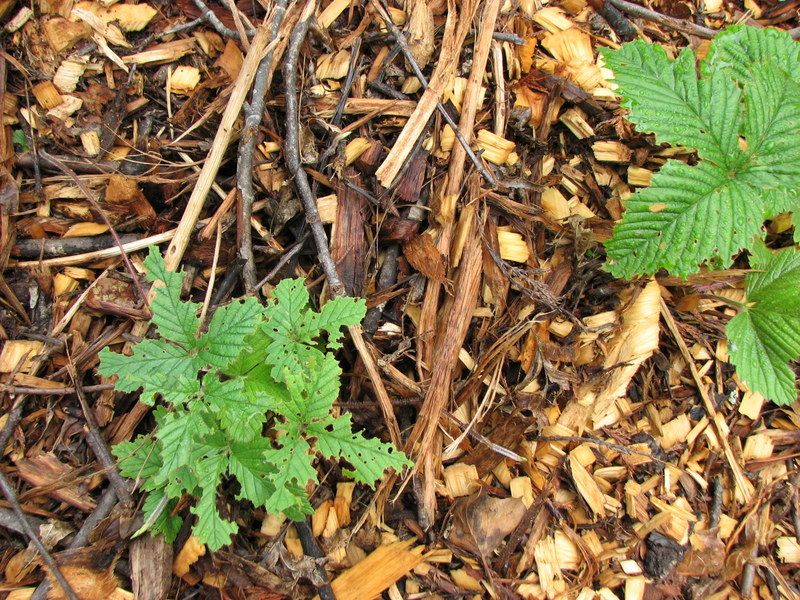
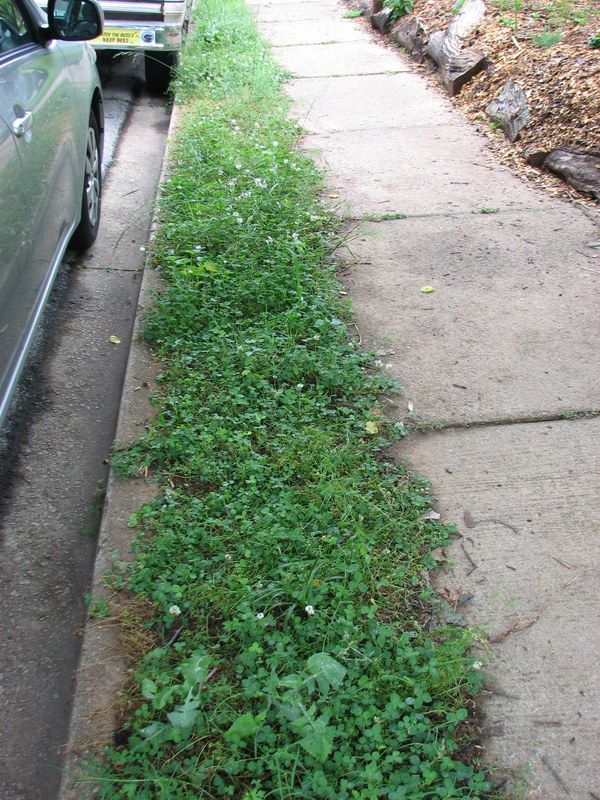

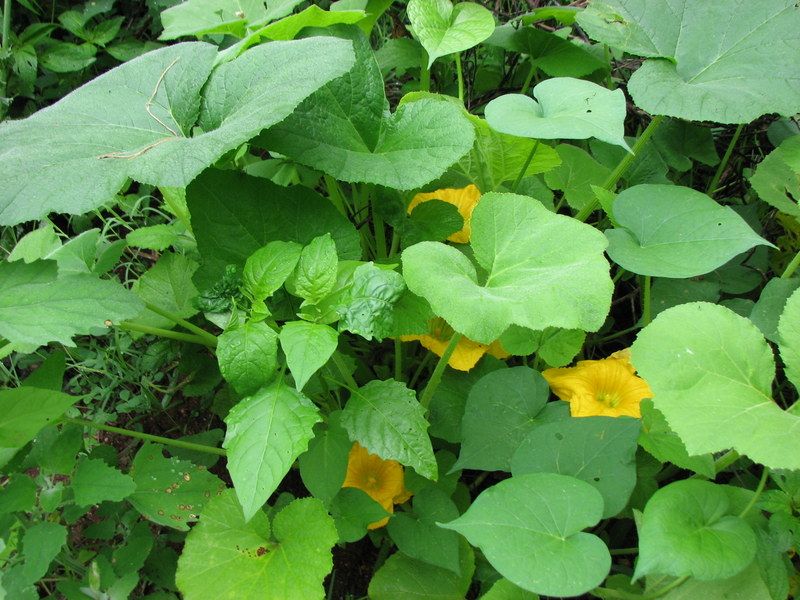
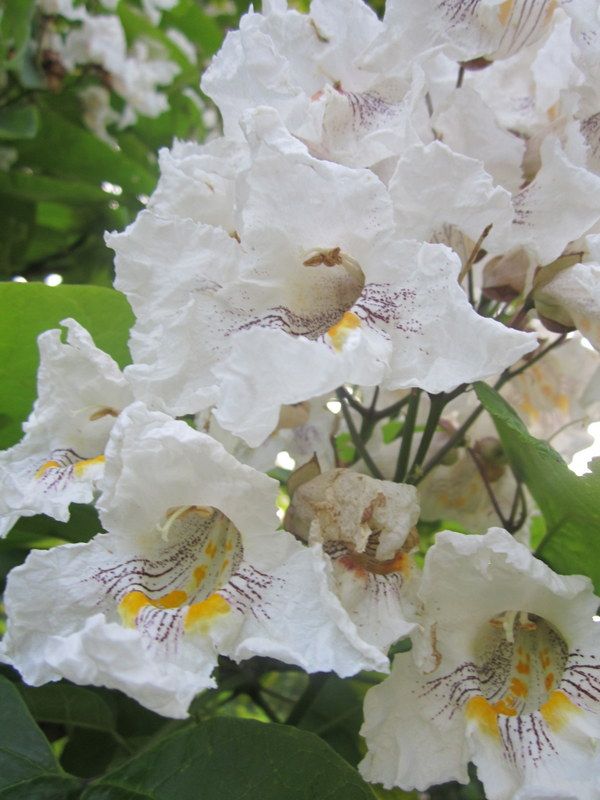
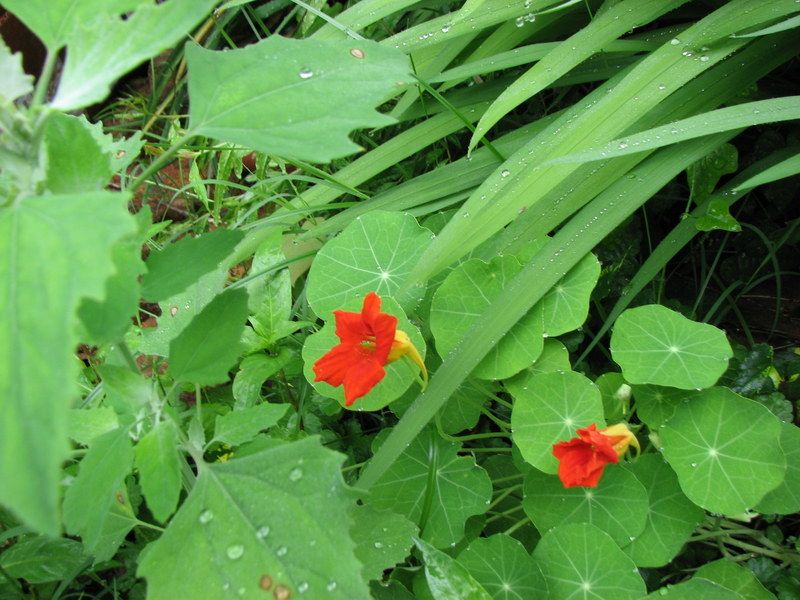
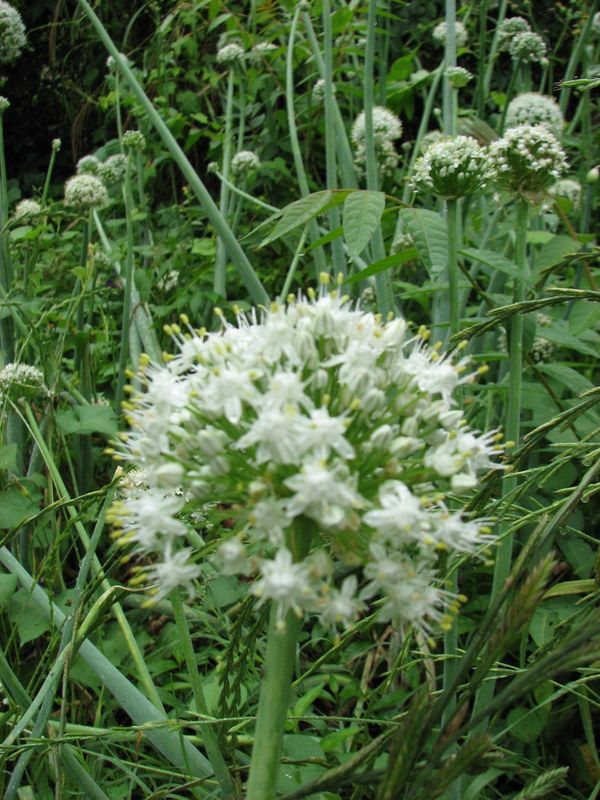
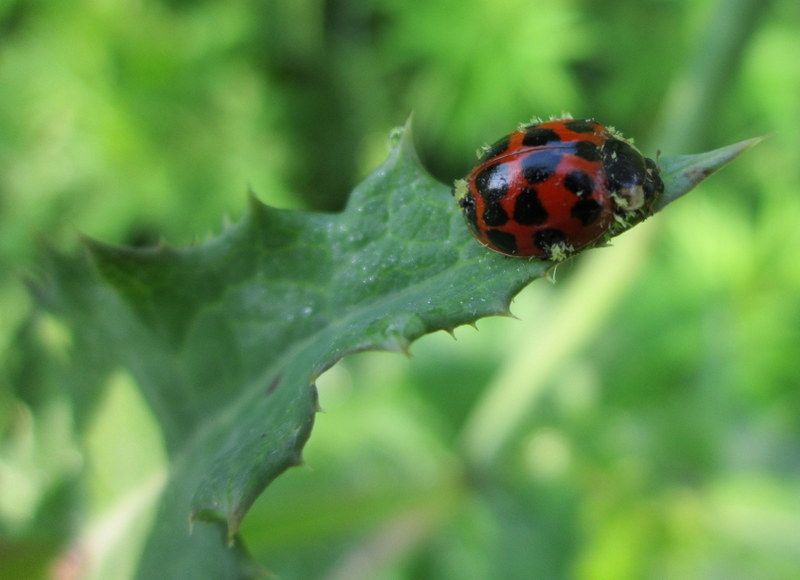
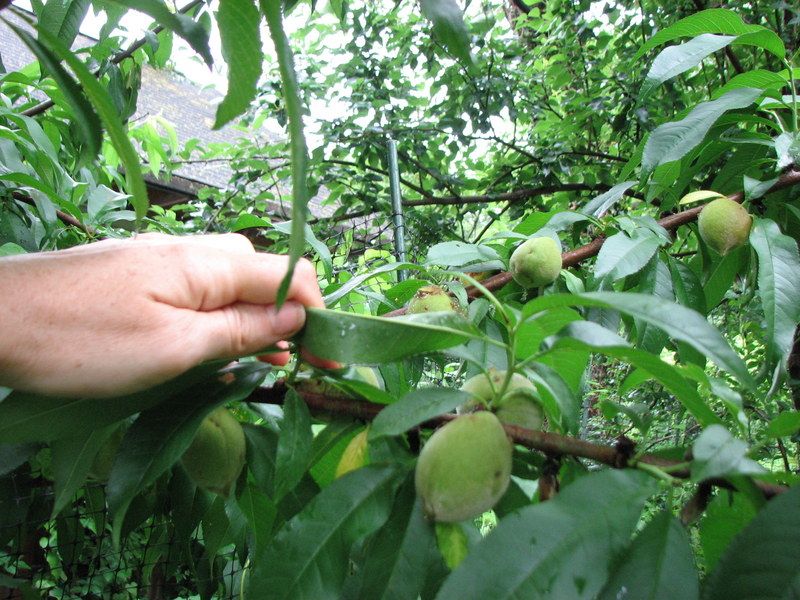


Pingback: How to “Permiculturefy” an Urban Farm | Appalachian Feet | Ethni-City Gardens™
Kathryn Macdonald - June 10, 2013 8:56 am
Eliza, oh my gosh!!!! So much knowledge and back breaking work!!!! You inspire us to do more, learn more and above all plant more! Thanks for sharing your knowledge so clearly and freely.
km
Eliza Lord
Twitter: appalachianfeet
- June 11, 2013 12:39 am
You’re welcome! Lucky for me a lot of people inspired me first.
Eliza Lord´s last blog post ..How to Feel Inspired by Ornamental Gardens
Pingback: How to Learn About Permaculture | Appalachian Feet
Pingback: Permaculture Planning for NOLA | La Bella Vita
Pingback: Permaculture Planning for NOLA | Coulson Woodwright
Pingback: Hugelkultur – Using Wood for Sustainable Gardening | Coulson Woodwright
Pingback: How to Attend Our Upcoming Garden Open House (& a Virtual Tour) | Appalachian Feet